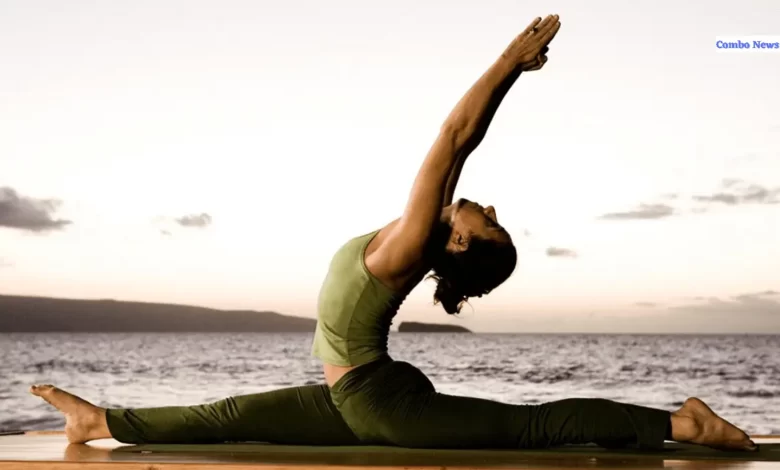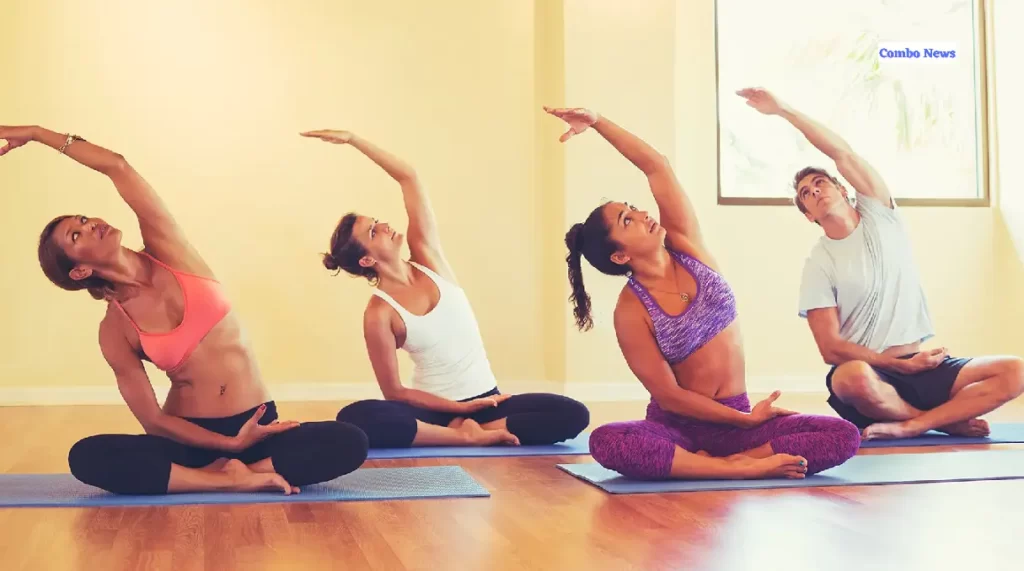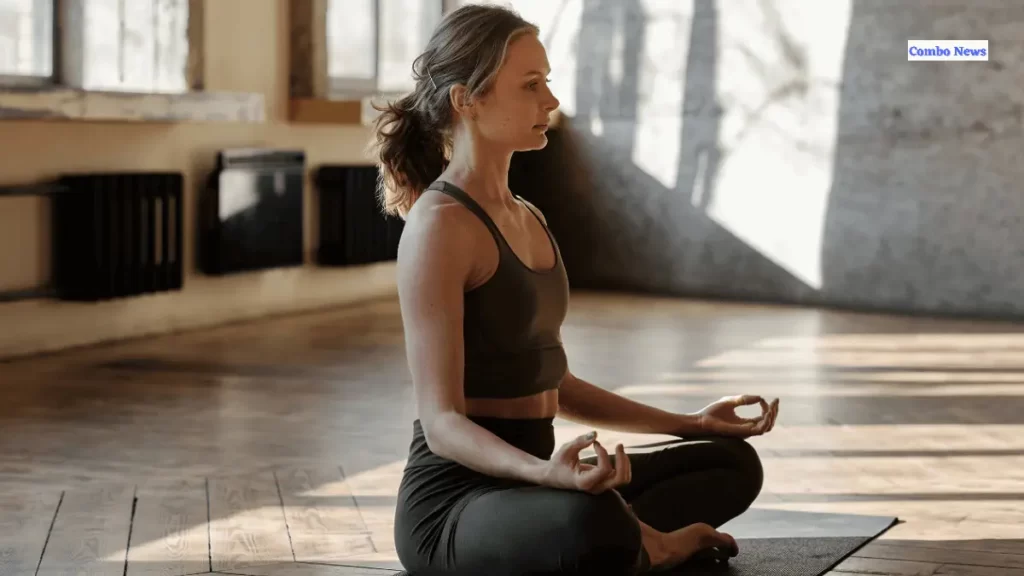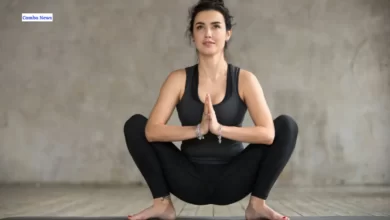
Yoga, an ancient practice that originated in India, has transcended cultural boundaries to become a global phenomenon. Rooted in the union of mind, body, and spirit, yoga offers a holistic approach to well-being. For beginners, stepping onto the yoga mat might seem like entering uncharted territory, but with the right guidance, it can be a transformative journey.
In the following paragraphs, we will explore the essence of yoga and delve into essential yoga tips for beginners, ensuring a seamless initiation into this path of self-discovery.

Yoga, at its core, is not just a physical exercise but a way of life that integrates breath control, meditation, and physical postures. The Sanskrit word “yoga” means union, signifying the harmonious connection between the individual and the universe. The practice is designed to cultivate a sense of inner peace, enhance flexibility, and promote overall health.
As yoga gains popularity worldwide, its diverse styles cater to various needs, from the dynamic flow of Vinyasa to the stillness of Yin yoga. Read on about yoga tips for beginners.
Also Read | The Ultimate Fitness Routine for Teenagers – Building a Healthy Lifestyle
What Environment is Helpful for Yoga?
Creating the right environment is crucial for a fulfilling yoga practice. Choose a quiet and clutter-free space where you can immerse yourself in the experience without distractions. Natural light and fresh air can enhance the ambiance, creating a serene setting for your practice. Invest in a good quality yoga mat to provide comfort and stability during poses. Ambient music or soft sounds of nature can also contribute to a tranquil atmosphere, promoting mindfulness and relaxation.
Challenges Faced by Beginners:
Embarking on a yoga journey can be both exciting and challenging for beginners. One common hurdle is the intimidation of complex poses seen on social media or in advanced classes. It’s essential to remember that yoga is a personal journey, and progress is unique to each individual. Physical limitations or discomfort may arise, but with time and consistent practice, these challenges can be overcome. Patience is key; allow yourself to grow gradually, and celebrate small achievements along the way.
Best 11 Yoga Tips for Beginners

1. Start Slow:
Begin with beginner-friendly classes or online tutorials that focus on foundational poses. Rushing into advanced sequences may lead to frustration or injury.
2. Focus on Breath:
Breath awareness is integral to yoga. Concentrate on smooth, deep breaths to enhance relaxation and connect with your body.
3. Listen to Your Body:
Pay attention to how your body feels during and after each session. Modify poses as needed, and avoid pushing yourself too hard.
4. Consistency Matters:
Establish a regular practice routine. Consistency is more beneficial than sporadic intense sessions, helping build strength and flexibility over time.
5. Explore Different Styles:
Yoga offers a variety of styles. Experiment with different classes to find the one that resonates with you, whether it’s the dynamic flow of Ashtanga or the gentle stretches of Hatha.
Also Read | Top 20 Games to Play with Family and Friends
6. Use Props:
Props like blocks, straps, or bolsters can aid in achieving correct alignment and provide support, especially for beginners.
7. Join a Community:
Connect with fellow beginners or experienced practitioners. Joining a yoga community, either in-person or online, provides support, motivation, and valuable insights.
8. Set Realistic Goals:
Establish achievable goals that align with your current fitness level. Gradual progress is sustainable and ensures a positive experience on your yoga journey.
9. Find the Right Yoga Style
The first step towards starting your yoga journey is to explore different yoga styles and find the one that resonates with you. Hatha, Vinyasa, Ashtanga, and Kundalini are some popular options. Each style offers unique benefits, ranging from gentle stretching to dynamic flows. Research and try out various classes to determine which style aligns with your preferences and fitness goals.
10. Set Realistic Goals
As a beginner, it’s essential to set realistic goals for your yoga practice. Understand that yoga is a gradual process that requires patience and consistency. Instead of aiming for complex poses right away, focus on building a strong foundation. Start with simple poses and gradually progress to more advanced ones as you gain strength and flexibility. Celebrate every small milestone to keep yourself motivated throughout your journey.
11. Listen to Your Body
One of the most crucial yoga tips for beginners is to listen to your body. Avoid pushing yourself too hard or attempting poses beyond your current ability. Yoga is about connecting with your body and finding balance, not about straining or causing injury. Respect your body’s limitations and modify poses as needed. With time and practice, your body will naturally progress.
The Conclusion
In conclusion, yoga is a transformative journey that goes beyond physical exercise. By creating the right environment, understanding common challenges, and following essential tips, beginners can navigate this path with confidence.
Remember, yoga is a personal exploration, and the key lies in embracing the journey rather than focusing solely on the destination. As you embark on your yoga adventure, let it be a celebration of self-discovery and holistic well-being.
Key Facts of Yoga Tips for Beginners
1. Yoga is over 5,000 years old and has roots in ancient Indian philosophy.
2. There are various yoga styles, each emphasizing different aspects of the practice.
3. The word “asana” refers to yoga postures, which are just one component of the overall practice.
4. Yoga has been scientifically proven to reduce stress, anxiety, and improve overall mental well-being.
5. Regular yoga practice enhances flexibility, balance, and strength.
6. Mindful breathing, known as “pranayama,” is a fundamental aspect of yoga that promotes relaxation and focus.
7. Yoga is accessible to people of all ages and fitness levels.
8. The International Day of Yoga is celebrated annually on June 21st, emphasizing the global significance of this ancient practice.
Also Read | Here Are 7 Yoga Poses for Students That Will Help Ease Exam Stress
FAQs
What is the best time of day to practice yoga as a beginner?
The best time for a beginner to practice yoga is typically in the morning, as it sets a positive tone for the day and helps establish a consistent routine.
Can I do yoga if I’m not flexible?
Absolutely! Yoga is for everyone, regardless of flexibility. With regular practice, you will gradually improve your flexibility over time.
How many times a week should beginners practice yoga?
For beginners, practising yoga 2-3 times a week is a good starting point. As you progress, you can increase the frequency to daily if desired.
What should I wear for a yoga class?
Wear comfortable, breathable clothing that allows for easy movement. Form-fitting attire is recommended to ensure proper alignment during poses.








